Sharlyn J. Lauby's Blog, page 57
February 22, 2022
4 Compliance Strategies that Create Labor Efficiencies

Estimated reading time: 5 minutes
(Editor’s Note: Today’s article is brought to you by our friends at ADP , a comprehensive global provider of cloud-based human capital management solutions. Industry analyst firm Nelson Hall recently identified ADP as a leader in both the small and medium business as well as mid to large market segments . Congrats to them! Enjoy the read.)
Ensuring employees are paid in a secure, efficient, and timely manner is one of the fundamental roles of an employer. So, making sure that organizations have the systems in place to properly manage the payroll process is vital. That includes compliance with employment tax payment and reporting rules with each of the various local, state, and federal agencies to avoid penalties.
However, as much as we want to do everything properly, it can be a challenge to maintain complex compliance requirements. If your organization doesn’t have human capital management (HCM) technologies in place, there can be more than 250 manual tasks to be completed to maintain compliance. It should be no surprise that in the ADP Research Institute white paper “Midsized Businesses: Poised to Lose Balance in a Time of Uncertainty“, business owners cited the complexity of government regulation and the ability to comply with employee data laws as a major obstacle to company growth.
A few weeks ago, we talked about “Making the Case for Change” when it comes to strategic compliance. In today’s dynamic compliance environment, organizations should take a closer look at some of the specific compliance strategies they can implement so the operation can focus on creating labor efficiencies. But implementing and maintaining a compliance strategy takes more than just HR. The entire organization needs to be involved. Here are four of the compliance strategies that can help the company spend more time running the operation:
#1 – Automated Compliance Opportunities
High-volume, routine processes like payroll processing and production are excellent opportunities for automation, where rules-based technologies can reduce errors and exceptions while at the same time significantly lowering costs. But according to a 2018 Deloitte Payroll Operations Survey, only 6% of organizations surveyed relied on some form of process automation for payroll processing.
In the same survey, respondents regarded payroll compliance/controls and payroll accuracy as the top two areas for improvement, both of which can be achieved through automation, resulting in greater efficiency and costs savings.
#2 – Operational Efficiency with Systems and Service
All too often, companies are too over-burdened administratively to even identify systems or services for which they may be eligible. For example, tax credits often require records that document fulfillment of the credit. Organizations need to plan for tax credit reporting requirements and calculations in advance and keep records to prove compliance.
One of the most common employment tax credits is the Work Opportunity Tax Credit (WOTC). The WOTC allows eligible employers to secure a tax credit when they hire an employee from certain targeted groups who have historically faced significant barriers to employment. Integrating WOTC qualification data into the application process can help companies streamline and improve the applicant process, which can ultimately result in hiring the best talent in a competitive job market.
#3 – Reducing Risk Exposure
I mentioned earlier that employer compliance challenges are broad, complex, and can include a wide range of operations. Not getting compliance right can put the whole organization at risk. Some of the most challenging employer compliance issues include activities that organizations deal with every day like garnishments and responding to agency requests.
Wage garnishments are the legal seizure of employee pay to repay debts and meet obligations like child support payments, tax levies, student loans, and consumer debt. Garnishments impact 1 in 14 U.S. workers, and an estimated 12% of those with a garnishment have more than one type, according to the ADP Research Institute report “The U.S. Wage Garnishment Landscape: Through the Lens of the Employer”. Affordable Care Act (ACA) compliance penalties were increased in 2020 for employers that fail to comply, fail to comply on time, or fail to document their compliance.Unemployment overpayments occur because of employers failing to respond promptly or properly to state agency requests which occurs approximately 20% of the time, according to the U.S. Department of Labor.#4 – Embracing the Future of Pay
When it comes to payroll and employee pay, it isn’t just how much employees are paid that matters but how they are able to access those funds. According to a 2019 ADP survey, more than 60% of employee respondents said if an employer offered more payment flexibility (e.g., the ability to select pay frequency, same day pay, or early access), it would make a difference in whether they would accept a job offer.
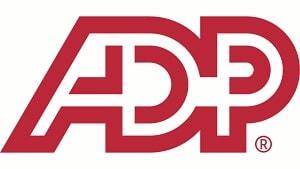
These pay card/digital pay solutions can reduce cost and effort for employers while enhancing talent recruitment and employee retention—just another example where innovation and labor efficiency can go beyond cost savings to contribute to the strategic goals of the company.
Process Improvements That Pay Off
Sadly, many HR processes are still manual and labor-intensive, burdening staff with tedious, inefficient tasks that can potentially introduce avoidable errors and compliance risk into the process. Creating a compliance strategy can lower costs, reduce unnecessary overhead, reduce risk, and position companies for both compliance and growth. As a result, the organization can concentrate on more strategic work – which may go beyond cost savings to positively impact employee hiring, engagement, and retention.
P.S. ADP has created a simple yet compelling, data-driven framework to help companies gather the data needed to present alternatives in support of their strategic compliance strategy. If you want to learn more, check out ADP’s Smarter Compliance site.
The post 4 Compliance Strategies that Create Labor Efficiencies appeared first on hr bartender.





February 20, 2022
Bookmark This! Books on Recruitment and HR Topics
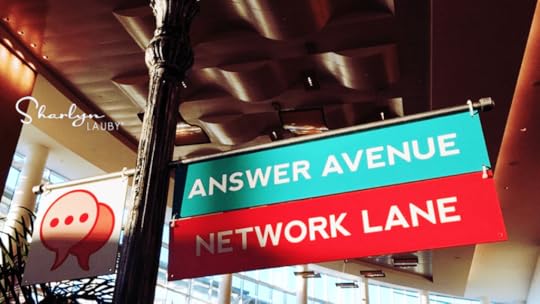
Estimated reading time: 4 minutes
Recently, an HR professional on Twitter asked for book recommendations on recruitment and HR-related topics. It sparked a great list, and frankly, I didn’t want to forget it…so I thought I would publish the list here. That way I can refer to it as I’m looking for books to add to my HR library. I hope you find it helpful as well.
The list is in alpha order. And if you have a recommendation, feel free to add a comment! I think this could become a great reference for others.
“A Guide to Diversity Talent Sourcing: How to attract and hire diverse candidates using Boolean strings and tools online” by Jonathan Kidder
“A World of Good: Lessons from Around the World in Improving the Employee Experience” by Gethin Nadin
“The 9 Faces of HR: A Disruptor’s Guide to Mastering Innovation and Driving Real Change” by Kris Dunn. Oh, and when you have a moment, check out my interview with Kris about the book.
“Becoming a Peaceful Powered Leader: How to Shed Fear, Live Courageously, and Own Your Peace” by Jared Narlock
“Betting on You: How to Put Yourself First and (Finally) Take Control of Your Career” by Laurie Ruettimann. I spoke with Laurie about her book last year.
“Confessions of an HR Pro: Stories of Defeat & Triumph” by Julie Turney
“Consider Ethics: Theory, Readings, and Contemporary Issues” by Bruce Waller
“Don’t Feed the Elephants!: Overcoming the Art of Avoidance to Build Powerful Partnerships” by Sarah Noll Wilson
“Elemental Change: Making stuff happen when nothing stands still” by Neil Usher
“The Elemental Workplace: The 12 Elements for Creating a Fantastic Workplace for Everyone” by Neil Usher
“The Energized Workplace: Designing Organizations where People Flourish” by Perry Timms
“Full Stack Recruiter: The Ultimate Edition” by Jan Tegze
“Help Them Grow or Watch Them Go: Career Conversations Organizations Need and Employees Want” by Beverly Kaye & Julie Winkle Giulioni
“HR on Purpose: Developing Deliberate People Passion” by Steve Browne
“HR Rising!!: From Ownership to Leadership” by Steve Browne
“The Human Resource Professional’s Guide to Change Management: Practical Tools and Techniques to Enact Meaningful and Lasting Organizational Change” by Melanie Peacock
“Introduction to HR Technologies: Understand How to Use Technology to Improve Performance and Processes” by Stacey Harris
“Launch Your HR Career” by Natalie Ellis
“Lead at the Top of Your Game: How to Deliver Compelling Influence, Drive Differentiating Value, and Build an Impeccable Leadership Brand” by Karan Ferrell-Rhodes
“The Little Book of Kindness” by Be the Ripple
“Manager Onboarding: 5 Steps for Setting New Leaders Up for Success” by Sharlyn Lauby (Some very nice person recommended my work.)
“Promotions Are So Yesterday: Redefine Career Development. Help Employees Thrive.” By Julie Winkle Giulioni
“Recognition Rebooted: A Smarter Approach to Employee Recognition” by Sam Jenniges
“The Recruiter’s Handbook: A Complete Guide for Sourcing, Selecting, and Engaging the Best Talent” by Sharlyn Lauby (Thanks again for the shout out!)
“Redefining HR: Transforming People Teams to Drive Business Performance” by Lars Schmidt
“Reshaping HR: The Role of HR in Organizational Change” by Julie Hodges and Mark Crabtree
“Road Signs on the High Road of Life” by Lauren Ann Schieffer
“The Robot-Proof Recruiter: A Survival Guide for Recruitment and Sourcing Professionals” by Katrina Collier
“Stop Collaborate and Listen: Developing Impactful HR Partnerships through Collaboration” by Tina Marie Wohlfield
“The Talent Fix: A Leader’s Guide to Recruiting Great Talent” by Tim Sackett
“Talent Sourced: A Comprehensive Guide to Sourcing Talent Online” by Jonathan Kidder
“Transformational HR: How Human Resources Can Create Value and Impact Business Strategy” by Perry Timms
“Unlocking High Performance: How to use performance management to engage and empower employees to reach their full potential” by Jason Lauritsen
The hardest part with a list like this is where to start. There are so many wonderful titles. My recommendation is look at which ones might be directly related to something you’re working on right now. Are you researching the purchase of new technology? If so, Stacey Harris’ book on “Introduction to HR Technologies” could be perfect. Or maybe you’re redesigning the employee recognition program and want to check out “Recognition Rebooted” by Sam Jenniges.
I’m sure whatever you choose, it will be beneficial. Happy Reading!
Image captured by Sharlyn Lauby after speaking at the SHRM Annual Conference in Orlando, FL
The post Bookmark This! Books on Recruitment and HR Topics appeared first on hr bartender.





February 17, 2022
Thank You From the HR Bartender Team

Estimated reading time: 2 minutes
We talk about recognition regularly on this blog. Recognizing people is important. One way to recognize people is to thank them.
And that’s what I want to do today. I want to recognize and thank you for supporting HR Bartender. I understand your time is valuable. I appreciate that you subscribe to the blog, take a few moments each day to read it, and share articles on your social channels. It means a lot to us.
It also means a lot to our sponsors. We’re able to take time to research, write, publish, and share information because of the generous support of sponsor organizations. I hope when you’re looking for an HR partner that you’ll reach out and consider these great sponsors (in alpha order):
Accurate Background, a leading provider of background checks, drug screening, and Form I-9 verifications.
ADP, a comprehensive global provider of cloud-based human capital management solutions.
Criteria, a leading provider of pre-employment testing services.
HRdirect, a trusted source for employee-related compliance, administration, and motivation tools.
Humu, an HR software platform that makes it easy for organizations to improve, every single week.
Paycom, a leading provider of comprehensive, cloud-based human capital management software.
SAP SuccessFactors, a market leader in enterprise application software.
SilkRoad Technology, a provider of strategic onboarding solutions.
Ultimate Kronos Group (UKG), a leader in HR solutions, committed to inspiring workforces.
I also want to thank the business professionals who are so generous with their time and knowledge. I certainly do not know everything needed to develop exceptional articles on HR Bartender. Thankfully, there are experts who are willing to help us learn and give us creative inspiration. We’ve all been faced with some new situations over the past couple of years and my guess is we’re going to be faced with more in the future.
Thanks again for your support. Mr. Bartender and I genuinely appreciate you!
Image captured by Sharlyn Lauby at the 34th Street graffiti wall in Gainesville, FL
The post Thank You From the HR Bartender Team appeared first on hr bartender.





February 15, 2022
Everything HR Needs to Know About People Science

Estimated reading time: 7 minutes
Where would your organization be in a month if everyone focused on improving every single week? It’s a big question to consider. And right now is a perfect time to focus on improvement as organizations think about their post-pandemic business and talent strategies.
I’ve been hearing about the term people science for a while and wanted to learn more about how people science can help managers and employees improve – not just once but on a continuous basis. So I reached out to Jessie Wisdom, PhD, co-founder and head of people science at Humu, an HR software platform that makes it easy for organizations to improve, every single week.. Prior to Humu, Dr. Wisdom led projects for Google’s People Innovation Lab.
Jessie, thanks so much for being here. I’m very intrigued by the term “people science”. Can you briefly explain what people science is and why organizations should pay attention to it?
[Wisdom] People Science is a people-focused approach that brings academic rigor to the study and practice of happiness and success at work. It combines insights and methodologies from the fields of behavioral economics, industrial-organizational psychology, organizational development, and data science.
It’s also often referred to as ‘people analytics’, which was created by the people operations team at Google under Laszlo Bock, one of my co-founders at Humu.
Organizations should pay attention to people science because it can help them create more equitable and healthy work environments. Humans are very susceptible to bias, which means that gut-based talent decisions often lead to inequities.
A particular challenge with a lot of HR issues and people challenges inside companies is every single person has their own intuition about what the right answer is. Unless you actually run the experiments and work in the field, whose opinion is more valid than anyone else’s? That’s where people science can help.
When individuals think about science, they might initially envision “hard” science like physics and chemistry. But I saw a quote from you that mentioned “Technology can do a lot of things, but it can’t feel.” What’s the connection between people science and feelings like empathy?

[Wisdom] People science can help leaders, managers, and individuals figure out how to best create a work environment in which each person feels valued, heard, and empowered to succeed.
One example of how people science does this is by leveraging nudges, or short, science-backed suggestions that prompt people to make better decisions. For example, a manager with great intentions might be so busy and focused on completing important tasks that they forget to check in with their reports at the beginning of 1:1s. A simple nudge before a 1:1 that reminds them to lead with empathy by asking something like, ‘How are you?’ or ‘What can I do to better support you?’ can have a big impact on how that report feels–and then on their performance and willingness to stay at the organization.
At Humu, we’ve built a software platform that integrates a range of data including employee engagement survey responses and individuals’ preferences to pick the exact right nudge to send a specific person at the right time. But what I said is true: technology can’t feel. That’s why I assembled a team that includes organizational psychologists and cognitive neuroscientists. When we make product decisions, we make sure that the whole team is considering the complexity of what it really feels like to be a person at work on any given day.
I’ve been seeing an increase in articles that make a connection between empathy and diversity, equity, inclusion, and belonging (DEIB). If people science and empathy are connected, then is people science connected to DEIB? Why or why not?
[Wisdom] Absolutely. People science can help organizations rely on data-driven decision-making, which (isn’t perfect but) tends to be less biased than going with your gut instinct.
For example, a people scientist might examine the data from the organization to understand whether different groups of people are feeling differently, or have different organizational outcomes, like performance scores, promotion rates, or compensation. They might also help to design future organizational practices or systems based on what we know from previous research on how to create inclusive environments, reduce bias in hiring, etc.
Organizations are currently evaluating their options where remote and hybrid work are concerned. Can people science help organizations make good decisions where their work environment is concerned? Maybe you could offer an example?
[Wisdom] Absolutely, but I want to first make sure leaders don’t jump to the wrong conclusions from the data they’re gathering now. People science can help them think more carefully about what might be driving noticeable trends. For example, if you observe that women at your company are more likely to say they want to work from home, ask why. Get curious about it. Try to find new ways to understand things, accommodate the needs of different people, and think hard about the potential unintended consequences of your policies.
Beyond looking at their own internal data to understand the experiences and outcomes for people who are remote versus co-located, organizations can and should establish best practices from organizational psychology research.

As just one example, managers may be (unintentionally) biased towards people they are co-located with, giving them more opportunities or higher performance ratings. By creating a clear focus on outcomes (not simply observable proxies of performance like time in the office) and reinforcing that focus via structured performance reviews or task assignment processes, we can help managers to make more fair and unbiased decisions. A simple change, like a manager looking at a list of all the people on their team who could be considered for a project, versus choosing whoever comes to their mind first – making remote team members more salient for consideration – can lead to significant changes.
Last question. All the things we’re talking about involve management – people, empathy, DEIB, and hybrid work. How can organizations bring managers into the people science conversation?
[Wisdom] People science can clarify for managers what small actions they can take to have a big impact on how their teams feel and perform. Modern managers are overwhelmed. In Humu’s 2022 State of the Manager Report, our data shows they’re struggling to help their people combat burnout and to hold onto top talent. Those can feel like big, overwhelming challenges. But with people science, organizations can help managers pinpoint exactly what they can do to make a difference. For example, a manager who learns their team is feeling unrecognized can kick off team meetings by acknowledging the efforts of their team or make it more of a priority to give positive feedback during 1:1s.
We’ve also seen how important managers are as catalysts for change within an organization. When employees see their managers trying to make things better (whether it’s working on creating a more inclusive environment, or better explaining decisions that are made, or setting more clear goals for their team), it goes a long way.
A huge thanks to Dr. Jessie Wisdom for sharing her expertise with us. If you want to learn more about people science, be sure to download Humu’s 2022 State of the Manager Report mentioned above. One of the most telling results for me was that almost half (47%) of managers said that they struggle with giving feedback, coaching, and career development. Not what you want to hear when employees are quitting at record numbers.
Organizations have a real opportunity to strengthen their workforce and improve their business as a result. But as Dr. Wisdom mentioned, it takes investing in your management team. They need the tools and support to hire, engage, and retain the best people. Part of those tools and support is explaining the science behind making optimal employee decisions.
The post Everything HR Needs to Know About People Science appeared first on hr bartender.





February 13, 2022
Recruiting: 6 Activities that Can Reduce Your Time to Fill Open Positions
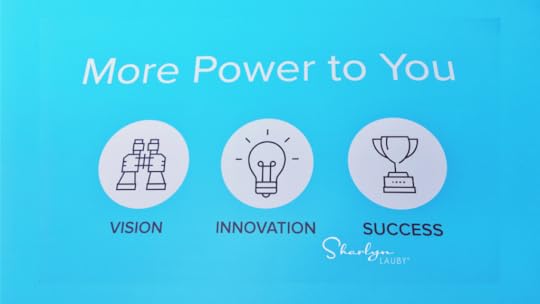
Estimated reading time: 4 minutes
Regardless of the job market, I’d like to think that most organizations want a short time to fill. The time to fill metric traditionally represents the average length of time it takes to fill an open job requisition. While you have some flexibility in when the clock starts and ends, most people consider a job open when the requisition is approved and consider the job closed when the candidate accepts the offer.
So, the shorter the time to fill, the quicker the new employee starts. That’s exactly what the organization and the new hire are looking for. So, the question becomes what can we do to shorten time to fill without compromising the integrity of the recruiting process? Well, here are six things to consider.
#1 COMPLIANCE: Organizations: The Time to Start Recruiting is Right Now
One aspect of the recruiting process that’s often overlooked is posting compliance. Just like the labor law posters required for your employees, there are specific postings you must make available to job applicants. Organizations are required to post applicant-facing notices regarding equal employment opportunity, family/medical leave, the polygraph protection act, immigration, etc. There are various applicant posting requirements under federal, state, and local laws.
#2 APPLICATIONS: Recruiting: 5 Ways to Get More Candidate Interviews
Organizations that are serious about hiring the best employees are working hard to create a hiring process that is easy for people to apply, interview, and get the job. That doesn’t mean the company has to compromise their standards. Just take a critical look at your hiring process and make sure it’s not the obstacle to success.
#3 SCHEDULING: Successful Recruitment Means Being Responsive to Candidate Schedules
48% of candidates would be less likely to recommend or engage with an employer in the future if they have a frustrating interview scheduling experience, rising to 64% with more senior roles. That requires understanding what frustrates candidates and being able to mitigate those frustrations. It only makes sense – candidates who are frustrated with an organization won’t want to work for them.
#4 MANAGER TRAINING: Interview Skills Training: Now Is a Good Time to Give Managers a Refresher
Organizations cannot afford to have a disorganized recruitment strategy right now. Because if they do, the result will be that the best talent gets hired by the competition. Find time to give everyone involved in the recruitment process a refresher focused on the three key components of excellent hiring: 1) understanding the job you’re recruiting for, 2) doing a thorough job of interviewing candidates, and 3) selecting the most qualified person for the job. The organization will see immediate benefits for it.
#5 BACKGROUND CHECKS: Select the Best Candidate Faster: Employment Background Checks
Background checks help the organization, employees, customers, and vendors. However, for them to be valuable, organizations need results quickly. In an article from the Society for Human Resource Management (SHRM), the average time to complete a basic background check is 24-72 hours. It can be longer if there are some complexities that need to be researched. If the best talent can find new opportunities quickly, then organizations need to be able to conduct activities — like employment background checks — quickly.
#6 REFERENCE CHECKS: Talent Acquisition: Create a Candidate Reference Check Strategy
Organizations that make the strategic decision to use a background check solution can reduce administration in their hiring process which can translate into a shorter time to fill. This benefits the organization. And it benefits the candidate who would love to get a job offer from you.
Reducing time to fill means having an effective hiring process where very little time is wasted. Organizations can do that by staying compliant. They can have a process that makes it easy for people to apply. Once applicants apply, make it easy for them to schedule or reschedule the interview. Give managers the training they need to interview well. And once the candidate has been selected, partner with someone to conduct background and reference checks.
Streamlining the hiring process means HR and operational managers are spending their time on the right parts of the process. And letting technology and/or a third-party handle the pieces that they do well. That perfect partnership creates the environment to hire people quickly, which is what everyone wants.
Image captured by Sharlyn Lauby while exploring the streets of Orlando, FL
The post Recruiting: 6 Activities that Can Reduce Your Time to Fill Open Positions appeared first on hr bartender.





February 10, 2022
Organizations and COVID Vaccines: What to Know
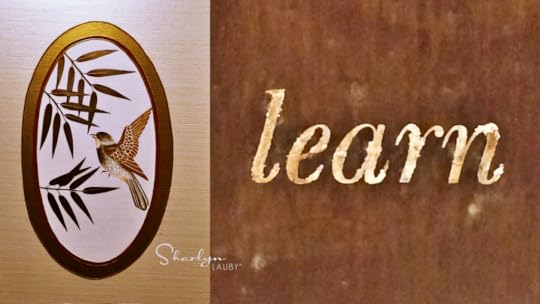
Estimated reading time: 11 minutes
A lot has been going on lately when it comes to COVID vaccines and the workplace. It’s important for organizations to stay on top of the decisions that are being made – or not being made – at a federal and state level.
As we continue to hear about decreased COVID cases, I’m sure organizations will want to start planning for employees to return to the office. We’re already seeing articles about it in the news. Ultimately, organizations need to provide employees with a safe work environment.
Thankfully, when I reached out to my friend and employment law attorney Carrie Cherveny to see if she would give us an update, she said “yes”. Carrie is senior vice president of strategic client solutions in HUB International’s risk services division. In her role, she works with clients to develop strategies that ensure compliance and risk mitigation when it comes to insurances such as health and welfare programs and employment practices liability. Carrie has been helping us throughout the pandemic to understand the matters that organizations need to consider.
And as you know, Carrie is a lawyer. Please don’t forget that her comments shouldn’t be construed as legal advice or as pertaining to any specific factual situations. If you have detailed COVID questions, they should be addressed directly with your friendly neighborhood labor and employment attorney.
Nothing will give a worse impression to a prospective employee than not walking and talking your own walk and talk. It will have them questioning everything you say and could be a deciding factor in their joining the company.
– HUB International Attorney Carrie Cherveny
Carrie, we talked about the OSHA Vaccination Standard a couple of months ago. What’s changed since then?
[Cherveny] On January 17, 2022, the U.S. Supreme Court ruled that the Centers for Medicare and Medicaid Services (CMS) could move forward with its vaccine mandate for healthcare employers that accept payment from CMS.
On the same day it also issued a ‘stay’ against the Occupational Safety and Health Administration (OSHA) Private Employer emergency temporary standard (ETS). Consequently, on January 25, 2022, OSHA put to rest all concerns about the Private Employer ETS as we knew it when it permanently withdrew the ETS. However, OSHA cautioned:
Although OSHA is withdrawing the Vaccination and Testing ETS as an enforceable emergency temporary standard, OSHA is not withdrawing the ETS to the extent that it serves as a proposed rule under section 6(c)(3) of the Act, and this action does not affect the ETS’s status as a proposal under section 6(b) of the Act or otherwise affect the status of the notice-and-comment rulemaking commenced by the Vaccination and Testing ETS. See 29 U.S.C. 655(c)(3).
This means that OSHA will continue to seek a permanent rule requiring private employers to mandate COVID-19 vaccines. OSHA will likely narrowly tailor the rule to specific industries: “[w]here the virus poses a special danger because of the particular features of an employee’s job or workplace, targeted regulations are plainly permissible.”
So as of this moment, vaccine mandates for healthcare employers that accept Medicare and Medicaid is in effect. Are there any other proposals that employers should be aware of?
[Cherveny] The Biden Administration issued two executive orders: one applied to federal contractors and the second to federal employers – both are under federal injunctions:
The Federal Contractor Vaccine Mandate – Executive Order – Executive Order 14042 compels each business contracting with the federal government to require its employees to be vaccinated or lose its contract. After much legal activity, the Eleventh Circuit upheld a nationwide injunction of the federal contractor vaccine mandate. This means that (for now) the federal government cannot require vaccine mandates for employees of federal contractors. The federal contractor vaccine mandate injunction has been appealed and will likely end up in front of the Supreme Court.
The Federal Employer Vaccine Mandate – Executive Order – Executive Order 14043 requires federal employees to be fully vaccinated against COVID-19 (with exemptions available for health or religious reasons) or lose their jobs. On Friday, January 21, 2022, a federal court in Texas issued a nationwide injunction prohibiting the enforcement of the federal employer vaccine mandate. This means that the federal government cannot require federal employers to mandate the COVID-19 vaccine for their employees. It is likely that this decision will also be appealed to the Supreme Court.
I understand that the issue of whether the government can require vaccines is being debated. However, if my organization still wants to require vaccinations, can they?

[Cherveny] Under federal laws, employers may require employees to receive the COVID-19 vaccine. However, there are specific and certain limitations. Employer vaccination policies are subject to various significant federal laws: (1) the Americans with Disabilities Act (ADA); (2) Title VII of the Civil Rights act of 1964 – Religious Discrimination; and (3) the Pregnancy Discrimination Act. As a threshold matter, employers must ensure that the rationale requiring vaccinations is based upon objective facts, tied to employees’ job descriptions, and administered consistently.
If an organization is thinking about moving forward with a mandatory vaccine program, can you share with us a couple of things they need to consider?
[Cherveny] Mandatory vaccine programs are not all created equal. There seems to be essentially two approaches to a mandatory vaccine program:
The Purist: employer requires all candidates and employees to become vaccinated by a certain date or within a specified timeframe. Failure to become vaccinated results in withdrawal of offer of employment or termination of employment unless the individual is eligible for an exception under state and/or federal law. The Hybrid: employer requires all candidates and employees to become vaccinated by a certain date or within a specified timeframe. Employees that fail to become vaccinated will retain employment but will be subject to greater safety scrutiny and standards including regular COVID-19 testing.However, under certain state laws, employers may be limited in their ability to implement vaccine mandate programs. Employers should be mindful of the state and local laws regulating vaccination mandates. Some states have implemented laws prohibiting or severely restricting private employers’ vaccines mandate programs. Violators of the state laws may face litigation and/or penalties. For example, in Florida, private employers may require employee vaccinations, but the policy must include the following exemptions for medical reasons, religious reasons, proof of COVID-19 immunity, periodic testing at no cost to the employee, and agreement to use personal protective equipment (PPE) such as masks or face coverings. (Editor’s Note: The Florida Attorney General has a Private Employer Vaccine Mandate Program website.)
Conversely, in Tennessee Government, schools, and local education employers may not implement a mandatory vaccine program. Private employers may require vaccines, but restrictions apply. Employers may not require proof of vaccination from their employees or customers or take adverse action for not providing the proof of vaccination. The law provides for a private cause of action.
And out of curiosity, was there anything in the Supreme Court ruling prohibiting health insurance surcharges? We talked about health insurance surcharges in a previous article .
[Cherveny] Employers that choose to offer voluntary vaccination incentives to employees have a number of plan design decisions to make – each of these decisions may make the incentive program particularly complicated or more streamlined and straightforward. Employers should ensure that they memorialize their vaccine program in a written policy that they distribute to all employees.
As threshold matter, employees with a health condition that is considered a ‘disability’ under the ADA may not be able to receive the vaccine and may require an accommodation to ‘remain whole’ and receive the employer’s incentive. If an employer learns that an employee may have a qualified medical condition that interferes with their ability to receive the vaccine, it should engage in the interactive process to determine a reasonable accommodation. An example of a reasonable accommodation may include requiring the employee to complete a special COVID-19 safety course to earn the incentive.
Program design will have a significant impact on the employer’s incentive program. For example, if the employer chooses to administer the vaccines onsite, but the EEOC warns that the incentive may not be ‘substantial’ or ‘coercive’. Employers offering onsite vaccines should proceed with caution with respect to the size of the incentive and should confer with employment counsel.
Conversely, an employer may offer an incentive of any value and not limited by the ADA if:
the employer vaccination program is voluntary; the employee may opt-out; and the employee may receive the vaccine at a provider of his or her choice (offsite).Employers must decide if they will use their program as a carrot or a stick. In other words, will the program reward employees that become vaccinated or will it punish employees who remain unvaccinated. Creating vaccine incentive programs can be tricky. At HUB, we recommend that employers proceed with caution and work with outside counsel. HUB has created an “Employer Guide to Vaccine Programs” to assist employers with decision making.
Employers must always be sure to safeguard the employee’s medical information. Like we’ve spoken about in the past, employee medical information is confidential under the ADA and must be held in a separate and secure file. Only those who ‘need to know’ may know the employee’s medical information (and need to know is construed very narrowly).
While we’re talking about vaccines, one of the aspects of vaccinations that we haven’t talked about is recruitment. Is there a best practice for organizations when it comes to communicating their position on vaccinations during the hiring process? If so, what is it?
[Cherveny] Two things come to mind. The first is communicate with absolute clarity as to what the policy and expectation is for all employees who join the firm. And if there is not a policy to align with for communication, the company should craft one ASAP. Of course, in this environment there will be changes, exceptions, and last-minute pivots. But the clarity of the policy expectation during the hiring process is what a candidate is expecting and due.
The second is, be sure this policy and the guidelines are being followed. Especially by company leadership. Nothing will give a worse impression to a prospective employee than not walking and talking your own walk and talk. It will have them questioning everything you say and could be a deciding factor in their joining the company.
If an organization doesn’t openly disclose their vaccination position, is it okay for candidates to ask? Why or why not? If it’s okay, how should candidates phrase their questions to accurately determine if it’s safe to accept a position?
[Cherveny] Perfectly acceptable. I wouldn’t caution anyone about asking a potential employer about salary, expected hours, working conditions and the like. Same with vaccine policy. Asking the question can start with the obvious “Being the way the work world has changed due to COVID, can you give me a sense of the company’s approach of managing things?” It will help to get first a general lay of the land as to work from home and hybrid policy, safety measures in place, and those are a natural Segway into company vaccination position.
Also, get clarity about potential client or customer policies. If I am working onsite at a client what is their policy? What would be the impact for non-compliance? And if they come to our office for a meeting, will they be required to abide by ours?
Last question. I know that organizations are getting bombarded with information right now. What are 1-2 things they should be focusing on when it comes to employee health and safety?
[Cherveny] First of all, state and local laws are of paramount importance now that most of the federal regulatory efforts are stalled or over (for now). Employers must be sure to pay attention to state and local laws including, for example, those that address masks, vaccines (i.e., mandates, limitations, and entry requirements), gatherings (i.e., prohibitions, limitations, and safety requirements), and post COVID exposure and/or diagnosis protocols.

Next, organizations need to focus on health and safety. At the beginning of COVID employers were laser-focused on health and safety. The employer’s safety protocols are an essential tool to help reduce the community spread of COVID-19 in the workplace, prevent and defend against lawsuits, and demonstrate compliance with OSHA safety requirements.
I cannot begin to thank Carrie enough for sharing her expertise and knowledge with us. Don’t forget to download the “Employer Guide to Vaccine Programs” that Carrie mentioned earlier in our conversation.
I know there’s a lot of information to digest here. It might take reading it a couple of times to take it all in. But the information is important to the health and safety of the workplace. And that directly impacts employee recruiting and retention. One of my big takeaways in this conversation with Carrie is that organizations need to have a clear opinion about vaccines. Even if the organization isn’t going to mandate vaccines, HR and the management team need to be able to clearly explain their position and process. Candidates and employees will want to know. A vague, poorly communicated response could have negative consequences for the organization’s recruitment and retention strategy.
Image captured by Sharlyn Lauby after speaking at the SHRM Annual Conference in Las Vegas, NV
The post Organizations and COVID Vaccines: What to Know appeared first on hr bartender.





February 8, 2022
Strategic Compliance: Making the Case for Change

Estimated reading time: 4 minutes
(Editor’s Note: Today’s article is brought to you by our friends at ADP , a comprehensive global provider of cloud-based human capital management solutions. Industry analyst firm Nelson Hall recently identified ADP as a leader in both the small and medium business as well as mid to large market segments . Congrats to them! Enjoy the read.)
I recently had an HR Bartender reader ask me about the topic of strategic compliance and how organizations should think about creating a strategic compliance strategy. It’s a great question. Compliance costs are often accepted as a cost of doing business without undergoing a lot of scrutiny unless or until a major compliance failure, or a series of smaller non-compliance issues, occur that puts the company at serious financial or reputational risk.
This is true regardless of the type of HR-related risks we’re talking about. Given the wide range of activities that HR is involved in, there is an equally wide range of activities that pose compliance risks, including:
Employment tax compliance including tax credits and incentivesPayroll processing including taxes, employee pay, wage statements, garnishmentsEmployee wellbeing which as a financial componentAffordable Care Act (ACA) compliance Employee fraud, sometimes referred to as “time theft”Unemployment claimsOrganizations have an opportunity to achieve operational cost savings, reduce compliance risks, and receive deeper business insights by developing a strategic compliance strategy. Let’s talk about how HR leaders can deliver a compelling business case to executive leadership to invest in compliance process optimization that helps mitigate risk and reduce costs. It starts by shifting our views about compliance.
Strategic Compliance: More Than a Cost of Doing BusinessThe world of work is changing rapidly, and we’re seeing how some companies are struggling to keep up. Here are just a handful of business, cultural, political, and technological trends impacting employers and compliance today:
New technologies including artificial intelligence (AI) and machine learning are creating new opportunities for innovation, along with issues and concerns for employers to consider.The emergence of the gig economy has redefined the make-up and expectations of workforces around the globe. New consumer trends impacting how employees are paid and how they manage their finances are shifting the compensation landscape.With so much changing so quickly, it’s no wonder that, according to a 2020 survey conducted by the ADP Research Institute, 40% of all business owners surveyed indicated that they had experienced unintended expenses because of non-compliance with government regulation.
Using Technology to Mitigate RiskHere’s the good news: despite increasing complexity, companies that use technology as part of their HR compliance strategy not only stay ahead of the curve in terms of managing compliance risk, but they can also significantly reduce operational costs and improve overall business efficiency and effectiveness. In a survey from KPMG, 67% of respondents said that technology would be integral to their compliance efforts.
As part of their strategic compliance strategy, companies invest in people and technology that will help them avoid or reduce unnecessary compliance risks. They do so with the assumption that their ongoing operational investments will be predictable and manageable and will far outweigh the unpredictable costs and business impacts associated with non-compliance.
You might be saying to yourself, “Sign me up! This sounds great.” And it is. But organizations do need to remind themselves of the pitfalls of complacency. As the ongoing costs of existing people, systems, and processes outweigh the impact of financial penalties and impacts to a company’s reputation, companies may be tempted to maintain the status quo.

Continuous analysis to identify hidden costs and illuminate hidden opportunities is what takes compliance from that “accepted” cost of doing business to “strategic strategy”. Organizations can use technology to access the right data and industry benchmarks. That access to timely, relevant data allows the organization to make the business case for change. It is equally impactful when it comes to realizing cost and efficiency improvements.
Strategic Alignment and Opportunity: Raising the HR BarIn a recent Bloomberg HR department benchmark study, 38% of HR professionals said their use of metrics and analytics was adequate. Those who agreed that their usage of metrics and analytics was adequate reported notably higher levels of departmental efficiency, cost savings, and data-driven decision-making.
ADP has created a simple yet compelling, data-driven framework to help companies gather the data needed to present alternatives in support of their strategic compliance strategy. If you want to learn more, check out ADP’s Smarter Compliance site.
When HR teams can look beyond day-to-day operational activities and compliance responsibilities, they can focus more on identifying and capitalizing on opportunities to contribute to executive-level strategic business goals and to having a greater impact on employee recruitment, engagement, and retention. That’s where the organization wants them to be.
The post Strategic Compliance: Making the Case for Change appeared first on hr bartender.





February 6, 2022
Organizations: Your Plans Should Include Workplace Testing

Estimated reading time: 7 minutes
(Editor’s Note: Today’s article is brought to you by our friends at Primary.Health , an organization that designs testing and vaccination programs at scale for public and private sectors. They are working with organizations in California, Colorado, Minnesota, and others to make workplace testing accessible and affordable. Enjoy the read!)
While there are an increasing number of good stories in the media that the COVID-19 omicron variant has “peaked” and it appears that cases are decreasing, we’re still going to be managing COVID-19 for the near, and likely extended, future. In fact, medical professionals are saying that the next logical transition with COVID-19 is from a pandemic to an endemic.
The CDC defines endemic as “the constant presence and/or usual prevalence of a disease or infectious agent in a population within a geographic area.” Endemic doesn’t mean that COVID-19 is less contagious or less severe. It means that COVID-19 is a little more predictable. I’m not a medical professional, but it seems to me that as COVID-19 becomes endemic, we will still need protocols in place to deal with infections. That’s why organizations need to consider having a workplace testing program in place.
Workplace Testing Programs Provide Organizations with a PlanA workplace COVID-19 testing program is exactly what it sounds like. It improves the safety of work environments by identifying positive cases, either by testing at-home before the employee arrives, or onsite, and this allows for quick and targeted intervention. The reason a workplace testing program is so important is because one of the biggest challenges with testing is time. A workplace testing program using rapid antigen testing protocols can reduce the amount of time it takes to identify positivity (i.e., generally in less than 15 minutes). This allows HR teams to take swift measures to protect the workplace by minimizing exposure, and to provide guidance and support to the positive case employee.
The benefit for organizations is that a workplace testing program can help reduce the costs from lost work and productivity, increased sick leave, and employee turnover as well as the disruptions in business operations and any associated customer dissatisfaction. In addition, testing programs can help organizations that are looking to resume group meetings and business travel. A workplace testing program can facilitate safe interactions and compliance with country, state, and/or local requirements.
Primary.Health is at the forefront of providing low cost, comprehensive programs for testing and tracking. Their futureproof platform meets employers where they are now and allows HR and environmental safety teams to focus on their broader responsibilities, without time-consuming administration.
A little history: Primary.Health was born of a volunteer effort in a little California town to protect the health of one community and has grown into a company committed to protecting the health of every community through easy and affordable access to diagnostics. They provide program management software and program design services that let employers, schools, and communities administer testing to comply with government guidelines and follow the recommendations of healthcare professionals. Through their work with some of the largest, most complex organizations at the height of the pandemic, Primary.Health has earned the experience and trust to provide superior diagnostic testing for COVID-19, flu, and other conditions that threaten population health.
How Workplace Testing Programs WorkBefore we talk about testing, I want to mention vaccinations and boosters because Primary.Health provides both. They work closely with organizations to create the right mix of onsite and at-home protocols. In addition, their support platform provides employee education about the different types of vaccines, boosters, and testing. So, HR departments do not have to become part-time epidemiologists for their employees to be safe.
This being said, I realize the Supreme Court recently opposed the Occupational Health and Safety Administration (OSHA) vaccination and testing mandate for large businesses with over 100 employees. However, this doesn’t mean that organizations don’t have to deal with this matter. By now, I’d like to think that employers are well aware of the impact that illness, and in this case, the COVID-19 contagion, can play in the success of their organization. So, one way to interpret the Supreme Court ruling is that now employers have the freedom to determine their own best solution for maintaining workplace safety and business continuity.
Back to workplace testing. I’m sure everyone wants to know what happens if an employee tests positive while onsite. According to Primary.Health, here’s what takes place:
The employee, manager, and HR receive notification of the test result. Please note that employee communications can be tailored and automated via the Primary.Health platform. The employer would take the appropriate safety actions to remove the employee from the workplace or instruct them not to come into work. Side note: If you’re looking for some best practices on “What Should Employers Do When a Workers Tests Positive for COVID-19?”, check out this article from the Society for Human Resource Management (SHRM). Positive cases receive clinician outreach within 24 hours of reported results from one of Primary.Health’s network of providers, for example SteadyMD. A follow-up testing cadence is determined before a return to work. So, the employee is not putting themselves or anyone else at risk.Primary.Health provides employers with an analytics dashboard that helps the organization monitor, track, and contain outbreaks. This actionable data on testing protocol adherence, outbreak severity, and positivity trends enables HR and management teams to manage testing programs and orchestrate targeted interventions to reduce outbreaks, increase safety in the workplace, and facilitate productive workflow. For example, an employer can filter for all employees who haven’t tested in the past 7 days and send them a reminder via email or SMS.
Speaking of data, one of the questions I had for Primary.Health was about data security. They told me that all information stored and collected in the Primary.Health secure platform is identifiable, protected health information (PHI) and therefore governed by the Health Insurance Portability and Accountability Act (HIPAA)along with Primary.Health’s robust data security policies.
Some readers might be saying, “This is great. But we don’t need to do onsite testing because the White House just announced that people can get free tests.” Not so fast.
Yes, it’s true that the President announced making 500M tests available and significantly increased the number of tests available to schools and community groups, but there was no mention of employersreceiving free tests. Individuals can order 4 free tests per household via COVIDtest.gov and they will be delivered via the U.S. Postal Service within 7-12 days. But realistically speaking, I’m sure individuals want to save their free tests for travel or family visits or anything else other than work.
And, as of January 15th, the White House announced that “private insurance companies will be required to cover up to 8 at-home COVID-19 tests per month”. However, insurers “are not required to provide coverage of testing for employment purposes”. This means these tests cannot be used as part of a workplace testing program.
So as of this moment, an employee’s workplace-related testing options are to either 1) use their personal free government tests (which they probably don’t want to do) or 2) take advantage of the multiple free testing sites available in their communities. Both options take time.

That’s why having a workplace testing partner just makes good business sense. Organizations can use a workplace testing program as an option to keep employees healthy and working without significant downtime. And without having to secure and maintain a stockpile of testing kits onsite. Oh, and don’t forget the part where you don’t have to stay current with epidemiology. All that is done for you!
Show Employees that Workplace Safety is a Top PriorityAfter all the time we’ve spent in this pandemic, now is not the time to blow it with a half-baked plan. As employers are thinking about their safety protocols, workplace testing is a natural conversation. And it will be for quite some time.
Employees might find it very comforting to know that they can immediately get tested when the need arises. It shows that the organization cares about the health and safety of their workforce.
I’ve said this before when it comes to HR and how we spend our time, just because we can do something doesn’t mean we should. I have no doubt that we can come up with a plan ourselves. But in a time when voluntary quits are at an all time high, and we’re trying to find the best talent, is researching COVID-19 testing protocols the best use of our time? Probably not.
Consider leaving workplace testing to the professionals. HR has a partner who will manage the process. If you want to learn more about workplace testing, check out Primary.Health’s employer testing and vaccination webpage. It includes a video with additional details that you can share with the rest of your organization.
The post Organizations: Your Plans Should Include Workplace Testing appeared first on hr bartender.





February 3, 2022
Managers Need the Skills to Effectively Retain Employees
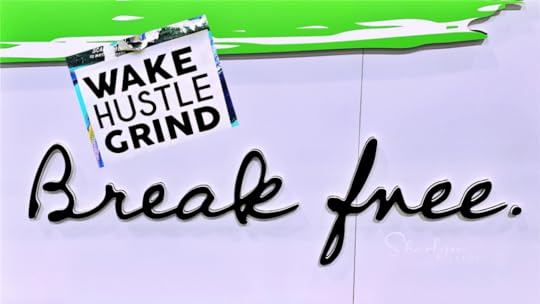
Estimated reading time: 4 minutes
Whether you’re calling it ”The Great Resignation” or “The Great Reprioritization” or “The Great Reset”, the reality is that the workplace is changing. And successful organizations find ways to change along with it.
A lot of the conversation so far has been focused on giving employees better pay and benefits. If your organization needs to address those things, then, you should.
I believe another area that needs attention is the role of management. Organizations place a lot of responsibilities on their managers. They have to. Which means that organizations can’t change if they don’t acknowledge that management needs to change. This could involve how managers are selected, trained, coached, or evaluated. It could involve all these activities.
As your organization is thinking about the role of managers and how the organization will support managers to take full advantage of the year ahead, here are some articles that might help.
10 Skills Every Manager Should Have
Employees who want to be promoted into a manager position need to understand the skills they should demonstrate – and why they need to have them. The more open and transparent organizations are about skills, the more opportunities they can create for employees to develop them.
Recruitment Skills Training: Educate Hiring Managers on These 5 Topics
One of the biggest responsibilities that managers have is recruitment. Because if they don’t do it well, then the other functions of their job (planning, organizing, leading, and controlling) will not go well. Organizations need to give managers the skills they need not only to interview but understand the recruiting process. That translates into better hires who can help the company achieve its goals.
Encourage Managers to Build a Peer Network
There are several reasons in-person management programs might not be feasible – budgets, staffing challenges, and yes, the pandemic. But that doesn’t mean training should stop. In fact, training becomes even more important. There’s no rule that says managers can’t build positive working relationships with other managers. And that manager groups can’t learn from each other, coach and mentor each other, and be supportive of each other. If organizations want their managers to be successful, giving them the tools and space to build their own support is essential.
When Should You Send and Answer Work Emails
One of the first rules of communication is understand your audience. That includes setting the right level of expectation with them. I don’t know that we’re going to be able to stop people from sending emails in the evening hours. But we can let others know that they don’t need to look at them. Or ask for their cooperation when we need them to read them outside of the norm. Employees (and managers!) should be able to close their laptops and enjoy their evening. That happens when effective communication take place.
Consistent Performance Management Can Help Employee Retention
Organizations and individuals care about performance which means that performance conversations are necessary. One of the keys to a successful performance discussion is consistency – in communicating performance expectations and discussing results. A forms library could offer the consistency that managers and employees are looking for to make their discussions more actionable and accountable. That’s a win for everyone.
Managers: How To Ask Your Team For Feedback – Ask #HR Bartender
When we regularly work in an office, it can be easier for managers to get feedback from employees. We simply walk up and ask someone. Managers might find it more challenging to get feedback when employees are working remotely. Feedback from employees is a great thing. With employees continue to work remotely, managers might want to consider a more formal approach to getting feedback. Let employees know that no matter where they are, their feedback is valued.
Leaders and Managers: Here are 7 Things Employees Expect of You
There’s an old saying that employees don’t leave organizations, they leave bad managers. On some level, that still holds true. An employee’s relationship with their manager can make or break their career experience. But that means managers and leaders in the organization need to be equipped to deliver a good employee experience.
Organizations that want to hire and retain the best employees need to give managers the skills they need to do that. Because not only will employees leave if they have a poor manager, but managers will also leave. If you want to keep your managers, they need to feel that they’re getting the tools to be successful. No different than any other employees.
Image captured by Sharlyn Lauby at the SHRM Annual Conference
The post Managers Need the Skills to Effectively Retain Employees appeared first on hr bartender.





February 1, 2022
7 Types of Employee Surveys and the Best Way to Use Them
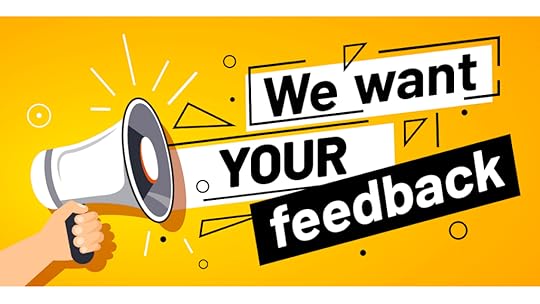
Estimated reading time: 6 minutes
(Editor’s Note: Today’s article is brought to you by our friends at Criteria , a leading provider of pre-employment testing services. To learn more about how pre-employment testing can benefit your talent acquisition strategy, check out Criteria’s “ Definitive Guide to Pre-Employment Testing ”. I’ve found it to be a comprehensive guide that I keep handy all the time. Enjoy!)
A survey is defined as “a method of asking many people a series of questions to gather information about what most people do or think about something” according to Merriam-Webster. Organizations use surveys all the time. From a customer perspective, companies ask customers for their views on products and services. They also ask about interactions (i.e., “How was your visit?”).
And of course, companies conduct employee surveys. Getting employee feedback is important but it’s equally important to have a survey philosophy or strategy because survey fatigue is alive and well. It happens a couple of ways.
First, people get too many surveys and as a result stop completing them. This results in a lower response rate which could make the sample size too small. A sample size that’s too small can increase the margin of error and cause poor conclusions to be drawn from the data.
Second, the survey is too long and people either drop off mid-survey or lose interest. Drop offs could impact sample size (see above). Losing interest could keep participants from providing detailed data. For example, remember central tendency bias? I think one of the reasons that people start answering questions in the middle of a rating scale is because they might be getting tired. They know that they need to do the survey, so they just give middle-range answers to get it over with.
Employee Surveys: The 7 Different TypesTo make sure you’re getting good information from your employee surveys, think about the different types of surveys that you conduct and why you need them. You can use this information to create a survey strategy that reduces fatigue and increases the quality of feedback. Here are 7 of the most common types.
Candidate Experience: Organizations might want to survey job candidates to find out their impressions of the hiring experience. Don’t forget there’s a connection between the candidate experience and the bottom-line. This type of survey can be done electronically and anonymously. It might make sense to tell candidates in advance that everyone gets a survey, so they’re not surprised. Also, conducting a candidate survey can show candidates that the company values feedback. Something they might like to know before becoming an employee.
Learning & Development: Employees are traditionally asked about their views when attending a learning event. One of the most common methods is the Kirkpatrick Model. The first level of the model is “Reaction” and is a survey to gauge participant reaction to the training/learning. An example of a Level 1 – Reaction question might be “Was the training a good use of your time?” The other Levels of the Kirkpatrick model are Level 2 – Knowledge, Level 3 – Behavior, Level 4 – Results. While they aren’t typically surveys, they are worth mentioning because a Level 1 survey could lead to further evaluation.
New Hire: There are a couple of times when new hires are surveyed for feedback. First during the orientation program and this is often a Kirkpatrick Level 1 (above). Then organizations frequently conduct “check ins” with new employees. These can be done electronically. Or in person. The goal of a new hire survey is to make sure that the new employee is getting all the support they need to learn the job and the company. If there’s something that needs to be addressed, it happens right away.

Employee Engagement: Sometimes called employee opinion or employee satisfaction surveys, they’re often conducted annually. Or every other year. Depending on how employees access information, they could be electronic or pen/paper (with the ability to scan). The key to success with this type of survey comes in the debrief (aka presentation of survey results). It’s about getting everyone involved in the conversation and being prepared to act on the results.
Ad Hoc: I think I’d be remiss if I didn’t mention that there are times when we just send out a quick survey about something. These types of ad hoc surveys can be helpful for quickly getting feedback – like where to have an event or what logo item employees want. But we do have to be careful that we’re not overloading someone’s email inbox and that we’re prepared to deal with the answer. For example, let’s say the company wants to give all the employees a logo item. You’ve heard from employees that they want Yeti mugs but the CEO says they want t-shirts. Someone suggests doing a survey – which shows everyone wants mugs. CEO overrides the survey and says to buy t-shirts. This can completely deflate employee expectations and hurt responses in future surveys.
Stay Surveys: I’m going to put stay interviews in this category because I believe it fits the definition. The purpose of a stay interview is to find out why employees like working for the organization. It answers the question “Why do you stay with the company?” This information can be beneficial in helping organizations understand what things not to change – because employees like them. And what the company can promote in their recruiting efforts. Organizations can include stay interview questions in their employee engagement survey. Managers can also ask stay interview questions during one-on-ones and collect responses.
Exit Surveys: If we are including stay interviews, then it only makes sense to include exit interviews. I’ve written about exit interviews before, so we don’t need to review all the details. Simply put, organizations can use exit interview data to understand why people leave the company. But it does take planning. Deciding who will conduct the interview (HR, Manager, or third-party), when (before or after the employee leaves), and how (in-person or online) are important decisions that have a big impact on the data you will receive. And like other surveys we’ve mentioned, it also means that the organization should be willing to act on the results.
Create an Employee Survey StrategyOrganizations can use surveys to learn valuable information that will help them hire, engage, and retain the best talent. But it takes thinking about surveys holistically. A haphazard approach will not yield good data to make decisions.
If you want to learn more about how to create a survey strategy, including generating survey participation and developing action plans, join me and the Criteria team for a webinar on “The Art and Science of Feedback: Using Surveys to Increase Engagement and Retention” on Tuesday, February 15, 2022 at 10a Pacific / 1p Eastern. The session will be recorded, so if you can’t join us, be sure to sign up to receive the recording.
With everything going on in today’s talent market, now is a perfect time to make sure your survey strategy is working…and working well.
The post 7 Types of Employee Surveys and the Best Way to Use Them appeared first on hr bartender.





Sharlyn J. Lauby's Blog
- Sharlyn J. Lauby's profile
- 10 followers



